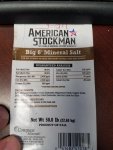treadwell
Senior Member
"I will turn off the feeder 2 days before turkey season, and restart the last day I hunt turkeys, on my way out of the gate." I just read in the regulations....UNLAWFUL TO:
- Hunt any area for a period of 10 days following complete removal of all bait. Seems like there is a slight problem with someone not following the rules.
- HMMMMM


